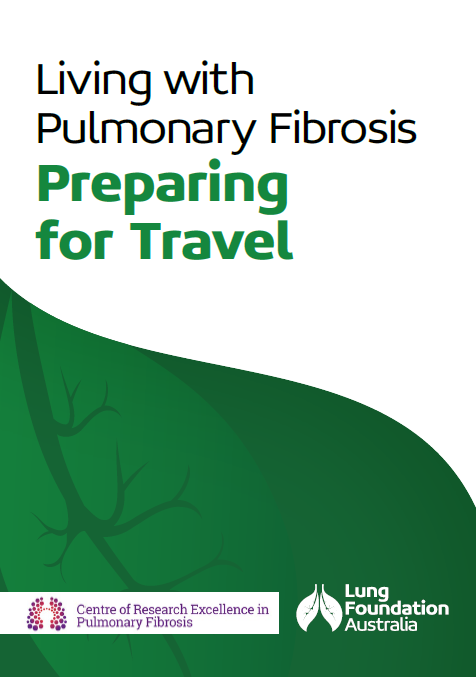The preparing for travel fact sheet provides you with information and tips on how you can manage your condition while undertaking travel and gain a deeper understanding of what to consider when you’re travelling.
Being diagnosed with Pulmonary Fibrosis (PF) doesn’t mean that you need to give up the things you love to do, including travel. You may need to do things a bit differently and do some more planning than you are used to, but it is important to maintain the things you love in your life.
When planning travel, it’s important to select destinations with suitable terrain, altitude, and climate for your personal circumstances. It is also important to organise your travel schedule to minimise fatigue, consider travel time and connections, and ensure accessibility to medical care and amenities.
For overseas travel, assess potential complications like illness, medical facilities, insurance coverage, and COVID-19 regulations, and consult with your healthcare team to evaluate personal risks.
It is essential to be prepared and plan for all the important things you need to pack and organise before you travel. This can include ensuring your vaccinations are up to date, packing enough medication and an emergency supply of antibiotics and ensuring you have sufficient oxygen supplies if you use oxygen therapy.
Obtaining travel insurance and declaring PF as a pre-existing condition is crucial. It may also be helpful to print out or save copies of important medical information, including medication lists, oxygen prescriptions, and healthcare team contacts.
If you plan on flying, you may need to undergo tests like the high-altitude simulation test to determine your oxygen needs during flights and obtain a medical-clearance form from your doctor if required by the airline. On the plane, it’s important to perform leg exercises, stay hydrated, and consider wearing a mask.
When traveling by car or caravan, secure oxygen cylinders or portable concentrators properly and plan for enough oxygen to cover unforeseen diversions, ensuring access to refill stations. For cruise travel, use a portable concentrator and inform the cruise line about your oxygen needs, ensuring the concentrator meets your oxygen prescription and checking for onboard oxygen supplies.
Was this page helpful?
Good job! Please give your positive feedback
How could we improve this post? Please Help us.




